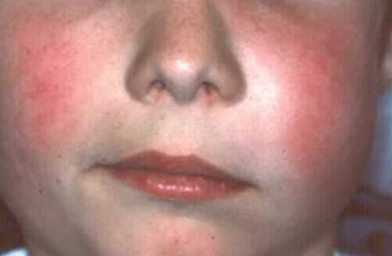23
Management of Extensive Caries
Philosophy of Care
Unfortunately many preschool children still have multiple extractions of decayed primary teeth under GA. Caries in the primary teeth is often ignored or treated poorly with glass ionomer cements without adequate treatment planning or regard to principles of restorative dentistry. Inevitably then many of these children develop pain or sepsis (Fig. 23.1) and are referred on to hospitals for the removal of carious and poorly restored primary molars under general anaesthesia. This treatment, though solving the immediate problem for the child, does not contribute positively to the child’s dental health attitudes for the future and can lead to fear of dental procedures. Also, many children who have carious primary teeth thus extracted return a few years later with carious first permanent molars, many times necessitating a repeat general anaesthesia for their removal. Young children who present to dentists with extensive caries deserve highest quality care, which should have prevention at the heart, but also rehabilitation of the decayed dentition wherever possible, using the best restorative techniques. Treating caries effectively in pre-schoolers would improve the quality of life of millions of children.
Figure 23.1 Facial cellulitis in a child resulting from an abscess on a poorly restored upper primary molar.

Treatment Planning
Relief from Pain
Many children first attend the dentist with pain. Providing relief from toothache should be a priority. This may involve extraction of the unrestorable teeth. Stabilising the dentition with gentle excavation of open cavities and dressing with glass ionomers is often helpful.
Diagnosis
The root cause of the child having multiple carious lesions is established.
Preventive Care
This should form the anchor of any treatment plan in children with extensive caries.
Rational Restorative Care
- Decision whether this can be provided with LA with or without sedation, or GA.
- In young children with extensive and multiple carious lesions a decision is made as to which t/>
Stay updated, free dental videos. Join our Telegram channel

VIDEdental - Online dental courses


